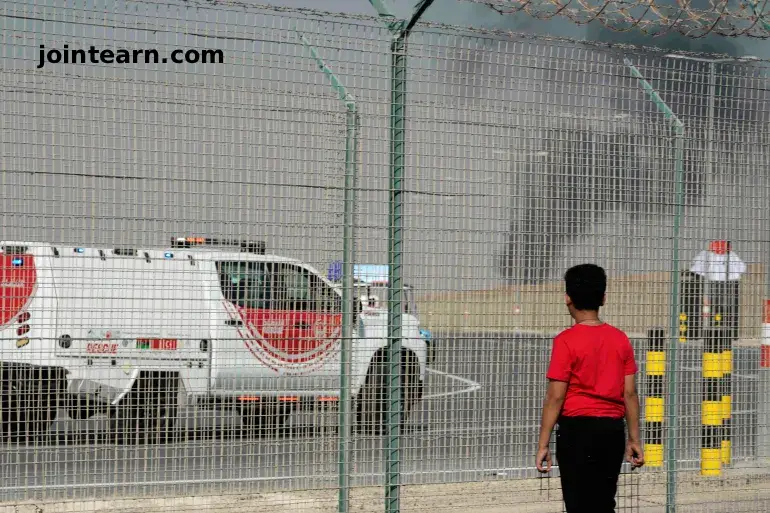
An Indian-built HAL Tejas fighter jet crashed in a fiery accident at the Dubai Airshow 2025, killing the pilot and marking only the second recorded crash of the aircraft since its development began. The incident occurred during a demonstration flight on Friday afternoon, drawing shock and concern from thousands of spectators at one of the world’s most prominent aviation events.
Pilot Killed as Tejas Jet Goes Down in Flames
The crash took place shortly after 2pm local time (10:00 GMT) at Dubai World Central, the site of the airshow’s final day. The Indian Air Force (IAF) later confirmed on social media that the pilot suffered fatal injuries, announcing that a formal investigation has been launched to determine the cause of the disaster.
“IAF deeply regrets the loss of life and stands firmly with the bereaved family in this time of grief,” the service wrote in a statement.
Eyewitnesses reported seeing the jet flying at a low altitude before it suddenly plummeted toward the ground in a fireball. Images published by Indian media showed the aircraft fully engulfed in flames, with thick black smoke rising above the runway.
Airshow Temporarily Halted as Emergency Crews Respond
Sirens echoed across Al Maktoum International Airport as emergency teams rushed to the crash site. The Government of Dubai Media Office described the pilot’s death as “tragic” and confirmed that firefighting crews were quickly deployed.
“Firefighting and emergency teams responded rapidly to the incident and are currently managing the situation on-site,” the office said, sharing an image of responders extinguishing burning wreckage.
Air demonstrations resumed within two hours, once officials had cleared debris and assessed the area for hazards. No additional injuries were immediately reported.
Tejas Fighter Jet: India’s Indigenous Combat Aircraft Under Scrutiny
The HAL Tejas, designed and produced by Hindustan Aeronautics Limited (HAL), is a key component of India’s efforts to modernize its air force and reduce reliance on foreign defense suppliers. The jet has been celebrated as a symbol of Indian aerospace engineering and a strategic asset as New Delhi faces growing regional security challenges—including China’s support for Pakistan’s air capabilities.
However, the crash in Dubai raises fresh questions about the aircraft’s reliability and operational readiness.
Only the Second Tejas Crash Ever Recorded
According to Indian media, the crash is just the second recorded accident involving the Tejas since its first test flight in 2001. The first occurred in March 2024 in Rajasthan, when a Tejas trainer jet went down during a routine flight. The pilot survived that incident.
Regional Tensions and Recent Military Losses Contextualize the Crash
The fatal accident comes amid heightened military tension in South Asia. Earlier this year, India and Pakistan engaged in their heaviest period of fighting in decades, involving air-to-air engagements, missile exchanges, and the loss of multiple aircraft.
The conflict erupted after an attack in Indian-administered Kashmir’s Pahalgam in April, which killed more than two dozen tourists. India blamed Pakistan, which denied involvement.
During the clashes:
- Pakistan claimed it shot down at least five Indian jets
- India initially denied the losses but later admitted it had lost aircraft
- U.S. President Donald Trump said in July that “four or five” Indian jets were downed
- A U.S. congressional report later documented the loss of three Indian jets, noting the significant role of Chinese-made weaponry in Pakistan’s arsenal
China supplied more than 80% of Pakistan’s arms imports between 2019 and 2023, further heightening India’s drive to strengthen its own indigenous defense technologies—making the Tejas program strategically important.
A Setback for India’s Air Force Modernization Goals
The Dubai crash is likely to be viewed as a significant setback for India’s military modernization campaign. The Tejas program has long been positioned as a flagship effort to expand domestically produced fighter aircraft, reduce procurement costs, and increase India’s defense autonomy.
With the aircraft showcased at international events to attract potential export partners, the crash at such a high-profile airshow may also impact India’s export ambitions.
As the IAF launches its investigation, officials and analysts will be watching closely for insights into whether the accident resulted from mechanical failure, human error, or other external factors.


Leave a Reply